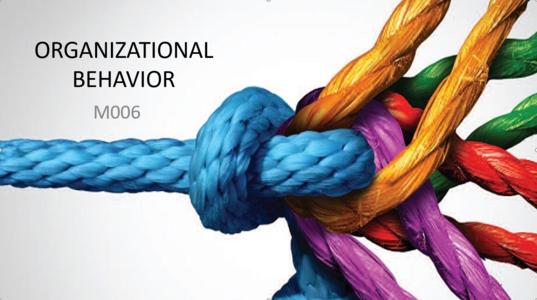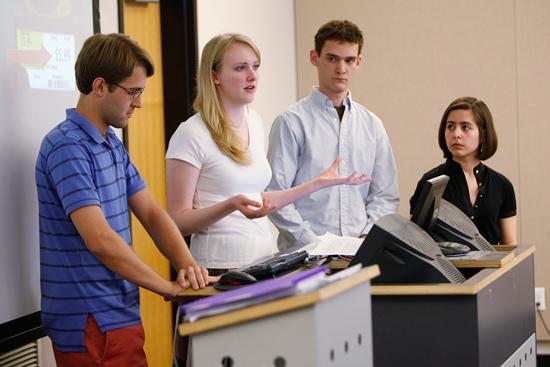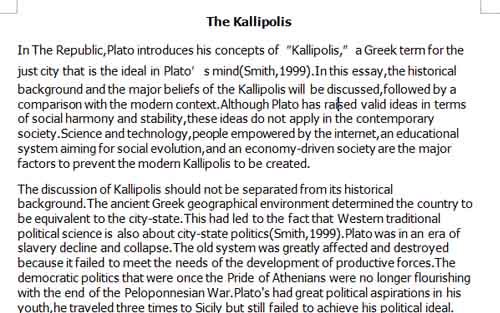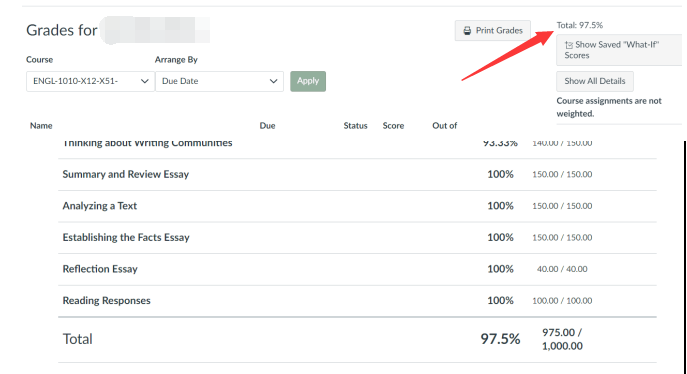本文是一篇组织行为学Essay代写范文,主要讨论了组织行为的关键的原则、理论和具体的组织行为主题。范文格式和内容仅供留学生参考学习,不得抄袭,如有Essay代写需要请联系网站客服。

This essay will consider key principles, theories and examples of specific organizational behaviour topics like personality, motivation and group and team working. All three themes are quite related to each other, because in a group or a team there are some people with different personalities and they all need those people need a motivation to work in groups or teams. To understand all topics, the essay is structured into three main parts. First, the explanation of personality, which is define as the distinctive and relatively enduring pattern of thinking, feeling and acting that can characterize person’s response to his or her environment will be described. The secrets of motivation’s driving forces in individuals that affects their direction, intension and persistence of work behaviour will be explained further in the second section, and in particular the motivation will be reviewed. Finally the nature and behaviour of working in the team or a group will be discussed. The main point in this essay will be to explain and consider the implications of personality, motivation at work and also group and team working.
本文将讨论一些关键的原则、理论和具体的组织行为主题,如个性、动机和团队合作。这三个主题都是相互关联的,因为在一个团体或一个团队中,有些人有不同的个性,他们都需要这些人有动机在团体或团队中工作。为了理解所有的主题,文章分为三个主要部分。首先,对人格的解释进行描述,人格的定义是一种独特的、相对持久的思维、感觉和行为模式,它可以表征一个人对环境的反应。第二节将进一步解释个人动机驱动力的秘密,这些秘密会影响到他们工作行为的方向、内涵和持续性,特别是动机。最后将讨论在团队或小组中工作的性质和行为。本文的主要观点将是解释和考虑人格、工作动机以及小组和团队工作的含义。
All over the world there is enormous number of organisations, like big worldwide corporations such as Coca-Cola, Microsoft, Apple or McDonald’s, local companies such as Morrison’s or Tesco, grocery shops around the corner or even clan of mafia, all of them have got several things in common, for example people with different personalities working in various positions and having the same ambition to increase output and profits. There are a lot of researches done how to improve job performance by different means and how to keep workers satisfied at the same time. But, why does managers must know what personalities of their employees are? Do workers have the same traits as their colleagues? What for personality’s revelation is useful for managers and their inferiors? How do the personality characteristics influence motivation at work? Why do some people find it difficult to work in a team, while others are a good ‘team players’?
世界上有很多组织,像可口可乐、微软、苹果或麦当劳这样的世界性大公司,莫里森或特易购这样的本地公司,街角的杂货店,甚至黑手党家族,它们都有一些共同点,例如,不同性格的人在不同的职位上工作,有着同样的雄心壮志来增加产量和利润。如何通过不同的方式提高工作绩效,同时又能使员工满意,已经有很多研究。但是,为什么管理者必须知道员工的个性?工人和他们的同事有相同的特点吗?什么样的人格启示对管理者及其下属有用?个性特征如何影响工作动机?为什么有些人觉得在一个团队里工作很困难,而另一些人是一个好的“团队球员”?
If you ask people ‘What do you know about personality?’ majority of them might feel they understand and know the right answer, because we need to admit we use this term quite often. But what exactly is the personality? According to John Bratton (2007) personality is the distinctive and relatively enduring pattern of thinking, feeling and acting that characterizes a person’s response to her or his environment. Personality rests on the observation that people seem to behave somewhat consistently over time and across different situations. Thus, the patterns of thinking, feeling and actions that are viewed as reflecting a person’s personality typically have three characteristics. First, they are seen as elements of identity that distinguish that individual from other people. Second, the individual’s behaviours seem to ‘interconnect’ in a meaningful fashion, suggesting an inner element that shapes and directs behaviour. Third, the behaviours are viewed as being caused primarily by ‘internal’ rather than contextual factors. Moreover, personality prescribes a group of original person characteristics, including emotions, motivation, valuation, interest, attitudes and competences. (Gordon 2002) Personality is possibly the area in psychology which assists employers to connect with labourers easily. Analyses of personality put these person’s characteristics together to help managers to understand individuals. They also are admired the behaviour of others and want to know why workers act as they do and what ‘makes them tick’ (Butt 2004).
如果你问人们“你对个性了解多少?”?他们中的大多数人可能觉得自己理解并知道正确的答案,因为我们需要承认,我们经常使用这个词。但到底什么是个性呢?根据John Bratton(2007)的观点,个性是一个人对环境的反应所特有的、相对持久的思维、感觉和行为模式。个性建立在观察的基础上,人们似乎在不同的时间和不同的情况下表现得有点一致。因此,被视为反映一个人个性的思维、感觉和行动模式通常有三个特点。首先,他们被视为身份的要素,区别于其他人。第二,个体的行为似乎以一种有意义的方式“相互关联”,暗示了塑造和指导行为的内在因素。第三,这些行为被视为主要由“内部”因素而非背景因素造成。此外,人格还规定了一组原始的人的特征,包括情感、动机、价值观、兴趣、态度和能力。(Gordon 2002)人格可能是心理学中的一个领域,帮助雇主轻松地与劳动者建立联系。对个性的分析将这些人的特点结合起来,帮助管理者了解个人。他们也被别人的行为所敬佩,并想知道为什么工人会这样做,以及是什么让他们行动起来(Butt 2004)。
In the humanistic psychology the most common models of traits incorporate three to five broad dimensions or factors. The personality of humans is classified according to the characteristics supposedly produced by the dominance of one of the four humorous: black bile, blood, phlegm and yellow bile in the individual’s bodies. Optimistic or sanguine people are cheerful and passionate. Melancholic people have a pessimistic temperament. Phlegmatic individuals are calm and unexcitable and lastly choleric people are bad-tempered and usually very irritable. Although subsequent research discredited the humoral theory, the notion that people can be classified into different personality types per is existing even not present. What is more, trait theorists therefore is trying to clarify various descriptors into a manageable number of the main personality traits that people display all the time, in order to understand and be able to predict human behaviour.
Hans J. Eysenck (1916-1997), is well known British psychologist, who used analysis to devise his own theory of personality. According to his research, Eysenck concluded that normal personality can be understood in terms of three basic factors or dimensions: introversion – extroversion, stability – instability and psychoticism. Introversion refers to a reserved nature and the pursuit of solitary activities, people which are introverts tend to be shy, thoughtful and risk avoiders. The opposite ones, extroverts, are likely to be sociable, spontaneous and be willing to take risks. Psychotism refers to an aggressive and antisocial nature, people are aggressive, cold, moody and unstable.
Another Austrian physician Sigmund Freud (1856-1939) developed the influential psychoanalytic theory of personality. According to Freud, personality is made up three separate but interacting parts: the id, the ego and the superego. This research convinced that personality develops out of each person’s struggle to meet person’s basic needs in a world. Freud proposed that an individual’s personality is determined by conscious, preconscious and unconscious brain activity, with the unconscious part of the mind exerting great influence on consciousness and behaviour.
However, trait theorists have made an important contribution by focusing attention on the value of indentifying, classifying and measuring stable and enduring personality characteristics. But as has been argued elsewhere, researchers need to pay more attention to how traits interact with personality. There is a tendency for researchers to make predictions on the basis of a single measured personality trait without taking into account other personality factors that also might influence the action in question.
While managers tend to think of diversity in terms of such factors as gender, ethnic origin or race, the variety of personalities in the workplace are also very important. Personality attributes determine how people communicate with other workers, whether they can work on their own without supervision, whether they behave ethically or not and more. John Holland best articulated the view that organisations should consider aligning the requirements of the job and the characteristics of the workplace with personality characteristics. At the present, awareness that organizations should focus on the degree of congruence between the individual and his or her work environment has expanded because of the need for workers to change and adapt to new work structures and employment relations. These include team working, individual performance and organizational culture.
The major methods used by organizations to assess personality and predict work behaviour are interview, inventories, behaviour assessment, personality test and e-assessment. However, some critical organisational theorists argue that testing measures what is effectively stereotype of an ‘ideal’ worker or manager. It might seem obvious that someone’s personality is a good predictor of job performance, but Frederick P. Morgeson, professor of Management at Michigan State University, says that the relationship between the two is often highly tenuous. One obvious criticism of personality tests is potential for faked answers as candidates seek to present themselves to employers in the best possible way. But the problems with personality testing run far deeper than this. According to Kevin Murphy, the professor of Pennsylvania State University, “as predictors of a job performance, their validity is disappointingly low.”. Nevertheless, while this might suggest that companies ought to reconsider their use of personality measures is making important hiring decisions and key appointments, Frederick Morgeson said that better ways to predict job performance include work samples, cognitive ability tests and structured interviews, all areas in which organizational psychology could greatly benefit human resource managers. Finally, personality assessment based on limited information can be very damaging to every organization. Indentify personality types are embedded only in the organization at the large and the inner tensions.
Every human action must be carried out in a number of reasons. In most cases we do something because we want it to. And those desires form our needs. Need – is the lack of the internal psychological or social sense. Then the individual finds out what he is lack of, he is trying to look for ways to meet his needs. Human needs are very different – one of them is the essential necessities of life, such as their life satisfaction is a necessary condition for the support, while others are psychological, social or even philosophical nature. If our needs are being not satisfied they soon become the motives, motives which promote us to work, to make so action, to make changes. Motivation is the process which stimulates us to achieve certain goals.
English and French dictionary of terms the word “motivation” describe as just simply “what motivates, ect. Energy depended on individual’s actions or the methods which help to increase the motivation of the individuals.” I. Balciuniene suggests using the opportunity to separate two concepts – motivation as noun and motivation as verb: “work motivation is made from conscious and unconscious forces of rising energy, which involves connections between the task and individual and determines the behaviour and orientation in the work.”; “the impact of staff motivation we should call motivation and its effects on the methods and means – motivation tools.” (Balciuniene, 1996). Similarly those two terms are appointed by foreign scientists: “Motivation the psychological feature that determines the degree of personal commitment. This includes all factors responsible for locating and supporting human behaviour in a certain obligation direction. And the statement of reasons is the management process which reflects the impact of the behaviour of people.” (Stoner, Freeman, Gilbert Jr., 2000, p. 434). “Motivation – self and other personal call to operate in favour of individual or organization.” (Neverauskas, Find, 2000, p. 66). Thus, Motivation as noun is defined as energy and as a psychological characteristic of the internal stimulation called incentive system, the driver of human’s behaviour; motivation as verb – the effect of motivation, promotion, the process which encourages and directs to act.
It is not enough that present activities are being coordinated – the activities should be encouraged, motivating employees realize their mental capabilities better. Managers are willing to apply to each individual eligible employee motivation measures interested in the work, you should know that individual very well. Motives – basis of human actins, which can be formed in some form when individuals needs can’t be fully satisfied. So as the motives stimulate the person, it must:
The goal must be worthy attention;
The goal must stimulate;
The goal must be realistic.
The importance of motivation is very high. Motivation – a behaviour promotion system leads human behaviour into the right direction and helps maintain a whole-employment period. Motivation is well thought action and it does not happen by itself. Promotion of growth potential, ability to assume responsibility for objectives of the organization itself is characterized by humans. Task for managers is to help their employees to recognize and to develop them, as well as to make conditions and do practices so that employees in the company to achieve its goals, and together make him or her useful for the company.
It is very useful to know at least the main theories of motivation, and be able to judge the relevance of them in particular contexts. Content theories of motivation assume that all workers possess a common set of basic ‘needs’. Process theories, on the other hand, explain work motivation in terms of a cognitive process workers go through before and during their behaviour. They assume that how individuals think about their work situation will affect their behaviour. The most well known theory is Maslow’s hierarchy of needs. Psychologist Abraham Maslow proposed that people have built-in set of five basic needs, which can arranged in a hierarchy such as physiological, safety, social, self-esteem and self-actualization as from in pyramid from the bottom to the top where going closer to the pyramids top the individual can find his high-order needs. Maslow’s theory of needs is based on the fallowing assumptions: one – people ten d to meet their own needs, but it is not possible to fulfil all their needs so they have to reduce them and another is that all people have the same needs. Maslow’s pyramid of needs is a system in which the higher level of demand does not rise till the lower level needs is not satisfied. And he point out that people can simultaneously meet only one level’s need at once.
Although, this theory has some drawbacks in the practice. Critics say that people can simultaneously meet the immediate needs from different lever, for example, then individuals are having lunch they meet their physiological and communication needs. Others tell that this is an abstract philosophical theory and it cannot be suitable for specific individuals, because people are very different.
Maslow’s need hierarchy appears to offer an advice to managers. But one of the major problems with his theory is that it is extremely difficult to identify which need is dominant at any given time. Without this information managers cannot confidently redesign the workplace or emphasize work-based learning to appeal to their employees’ self-esteem or self-actualization needs, for instance: this might not in reality be their main motivators. If managers really want to change and improve the outcomes of the work of employees, they must take an active role in the management of reasoning process. This is not what is happening just by itself. Furthermore, motivation is a complex phenomenon and to understand it is not so easy.
The group or a team concept is one of the most important organizational developments to hit business since the industrial revolution (Manz and Sims 1993). Work groups are not something invented by management consultants. History shows that they have been part of human social development since ancient times. For thousands of years men and women lived in small hunting and gathering groups, and later they lived in small farming or fishing groups. It is only in the last 200 years, with the advent of industrial capitalism and the development of the factory system, that small groups became the exception rather that the rule (Johnson 2000).
In the international Words Dictionary, the word ‘command’ is described as a small group of individuals with the intension to do a certain task. Hence, a group of people working together as a team is very important in the working situations and learnt things applicability and usefulness in specific situations is a critical feature. So team work key elements are cooperation, mutual support and balance of variety of different individuals in the group. Team working is a group of people, who are trying to use their all efforts to reach the same goal. According to V.Barvydiene and J.Kasiulis (1988) a group is a community of individuals, in which all members are connected with same features like mutual activity, inter-communion, common interests and belonging to the same organization, while team – is a group of people working together, where each member’s existence is very important to realize the same purpose and meet all needs of each group member. T.Tomosiunas (1999) says that “Every individual in belongs to some various groups like family, groups of friends, school or work collective and so on. However, not each member of the group or a team can work harmoniously and successfully.”. Author draws attention to the fact that an effective group activity can occur only if the group is able to concentrate and use all of the skills of each member in the team for organization’s goals.
Most group theory examines group outcomes in term of group performance and effectiveness. it was discovered that workers in a variety of agencies had a great deal in common and that the major component of that common experience lay in their experience with groups. Out of this recognition came the widespread use of the term social group work and the development of interest groups focusing on work with groups in a number of cities. The second discovery was that what was common to all the groups was that, in addition to the activities in which the group engaged, groups involved a network of relationships between the members and the worker, between the groups as a whole. His combination of relationships was called the group process. This second realization produced a search for deeper insights into these relationships, an attempt to describe them and to understand their dynamics (Reid 1981). The work of Maslow helped human relations advocates to clarify their perspective, with its focus on the interrelations between workers and the quality if the employment relationship. They suggest casual relationship between five core job characteristics (skill variety, task identity, task significance, autonomy and feedback) and the worker’s psychological state. If this relationship is positive, it leads to positive outcomes. This model also recognizes the importance of learning to achieve motivation and outcome goals.
Teamwork is usually considered an important factor especially in a workplace. However, there are some significant problems and difficulties that are experienced while building teamwork among individuals. In a broader perspective, there are issues such as cultural and personal differences, differences in future prospects, professional and workplace issues, social differences, education levels and gender disparities. Communication barriers, lack of training of employees on teamwork poor commitment from all stakeholders undermine the spirit of team work (Dyer, 1995).
In teamwork, some individuals who hold a moderate point of view tend to believe that their teammates hold stronger and extreme views than them. They will eventually adjust their positions in view of the ones perceived to be superior-a conditional phenomenon referred to as a groupthink. This is normally a dangerous and risky way of working things out especially where critical thinking and consultation is required. Sometimes poor leadership and management skills can cause very negative impact in the group. Leaders are normally adamant about getting information from their junior colleagues and whenever they receive any, they are either brushed off or just neglected. In teamwork, every person’s point of view should be taken into account. The reality is however different from what is expected in that some team leaders and coordinators tend to push for their own views to be accepted by the other members. Shapers and plants in teamwork are responsible for brainstorming the members of the team but they normally abuse this responsibility (Maund, 2001).
Critical evaluations of team working focus on paradoxes and the effects of team’s ideology and behaviour of workers. For effective realization of the benefits of teamwork, there should be a well coordinated form of communication. Evaluate all the benefits of groups and team working, insensibly, the question arise – is always a team work is better than an individual one. The answer is no. It should be remembered that both group and individual work has both advantages and disadvantages. Team work is useful when the solution is not obvious and we need information, knowledge and abilities of other people to achieve the objectives and range of ideas. Meanwhile, for simple tasks with clear problems and goals, or problems with the logical, subtle reason enough to solve need only individual efforts.
To sum up, therefore, that the basic principles of team work are cooperation, listening to other team member’s opinion, recognition, trust and mutual aid. Individual work often reaches gain for a worker while group’s product is both individual and team’s performance.
In conclusion then, the main point is that in this modern society everything depends on job performance. In the working field a lot of things depend on individuals. To make work successful people need to have motivation and good team. The members in those groups need to be similar, the need to consider their personalities in order to avoid failure. A successful team has to be balanced and cooperative. And all these features combined together give us a great organizational world.
以上为组织行为学Essay范文全文,供大家参考学习。如有代写需求,请扫描右侧二维码联系网站客服。










